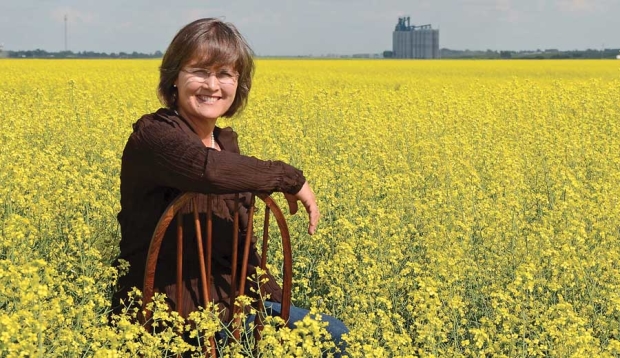
Courtesy Elaine Froese
One of the hardest things many growers face is the moment they start thinking about retiring and passing the farm to their children.
Elaine Froese, a farm family coach from the small town of Boissevain in Canada’s Manitoba province, calls it succession planning: devising a long-term plan to pass farm ownership from one generation to another.
It’s a problem that isn’t news to those in agriculture. Of 2.1 million principal farm operators in the United States in 2012, roughly one-third are age 65 and older, and 61 percent are age 35 to 54, according to the National Agricultural Statistics Service’s 2012 Census of Agriculture. Just 6 percent are under age 35.
“There is a tsunami out there — three decades of backlog of farm people who know they need to plan succession and are avoiding conflict by not doing it,” she said.
Speaking at the Mid-Atlantic Fruit and Vegetable Annual Convention in Hershey, Pennsylvania, Froese (pronounced phrase) explained the difference between coaches and counselors. “I’m not a counselor,” she said. “Counselors are for recovery.”
Rather, she said, “I help people to find the clarity of their expectations, the certainty of timelines and agreements and a commitment to act.”
Succession planning is a crucial problem, she said. Everyone dies, and people need to have plans in place to mitigate times of crisis, whether they are caused by death, divorce, disability or conflict.
“People are not paying attention to their age,” she said. “They must have plans in place to protect their legacies.”
Overcoming the resistance generated by not knowing how to start the conversation is one of the biggest challenges posed by succession planning.
Froese said she helps farmers to be clear about what they want and when they want to do it and then put it into action, whatever “it” is.
“‘Someday’ is not a day on my calendar,” she said. “Family discussions on farm succession don’t work like Roundup. It’s an ongoing journey.”
Froese said she has seen some huge family debates over the issue of the amount of money the farm can afford to pay to the founders when they leave the operation. Lifestyle needs — all the bills the farm used to cover for the family’s living expenses — need to be determined well in advance of any succession event.
In the absence of life savings or an ongoing retirement plan, one of the first things to determine is how much it costs to run the household each year. Froese suggests using a program like QuickBooks or asking a bank or credit union for living expense forms.
“Experts recommend that the older generation have at least 50 percent of their retirement income from outside investments and nonfarm related income,” she said. “If you are a young farm family, get a financial planner soon, so that you’ll have nonfarm income streams later on.”
Farm couples should plan well for the two or more decades they will live after they leave the farm.
Shifting power, wealth
With new partners and shifting equity, two key considerations are the loss of wealth and power. Along with that is the question of who will be the decision maker, and when does this power shift occur.
“Where there was only one decision-maker before, now there are two managers,” she said. “This can be a good thing because critical decisions can be made in a timely manner when one of the managers is inaccessible.”
Growers should be prepared to share the farm’s books, she said, because it is critical for everyone in the farm business to know its income stream and what it is capable of generating.
They also should be prepared to overcome resistance to discuss the transition. “The more planning people can do while they are alive — with warm hands rather than cold ones — the more certainty they can create about the present,” Froese said.
In this area, she speaks from experience. She and her husband gave their son some land so he could use it as leverage to buy his own property.
Make it a combination of gifting and buying, she said. “Who can afford to buy you out at 100 percent of the farm’s value?”
Questions to answer
A good goal to aim for is to begin granting farm ownership and equity to the next generation before they are 40, she said.
The first step in this process is to decide future roles. “Create a role map for yourself, for your place within the family, your work and your community,” Froese said. “At age 60, can you be an employee again? When you are 70, can you become a mentor?”
It’s an issue of the heart. “Who am I if I am not the founding partner anymore?”
A grower should determine what a spouse or partner wants and if they are aligned in their goals, and then, what successors want, she said. And finally, they should determine the timeline for this process. •
– by Dave Weinstock
Farm coach
Elaine Froese brings years of experience to her work. Raised on a mixed cattle farm, she married a seed grower named Wes and worked as an extension home economist from 1978 to 1984. She taught Manitoba farm families about financial management, communication, nutrition, community development and sewing.Over the last 10 years, Froese has coached more than 600 farm families about solutions to family conflicts, divorce, adding children as partners and one of the thorniest problems in modern farming: passing farm ownership over to children and partners.
For more information, visit elainefroese.com.






Leave A Comment